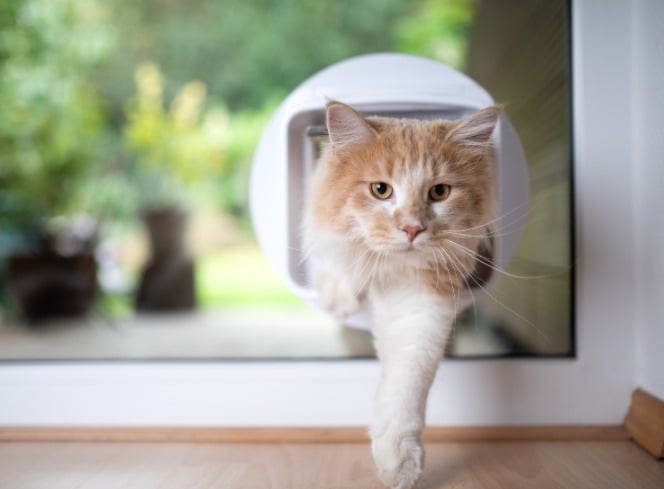If you’re a cat owner, you’ll know just how much our feline friends love to climb, scratch, and lounge in elevated spaces. A good cat tree provides the perfect solution, offering a multi-functional piece of furniture that not only satisfies your cat’s natural instincts but also complements your home decor. In this blog, we’ll explore the best cat trees available, focusing on stylish, premium options from our exclusive ranges at Lords & Labradors.
Why Invest in a Cat Tree?
Cat trees are more than just fancy furniture for your pet; they’re essential for their health and happiness. Here are a few reasons why:
- Exercise: Cats love to climb, jump, and explore. A well-designed cat tree promotes physical activity, keeping your feline fit and agile.
- Mental Stimulation: Multi-level platforms, hidden nooks, and interactive features keep your cat entertained and mentally stimulated.
- Scratching Outlet: Save your sofa! Cat trees come with built-in scratching posts to satisfy your cat’s urge to scratch while protecting your furniture.
- Safe Spaces: Elevated perches give your cat a sense of security, allowing them to relax and observe their surroundings from above.

What to Look for in the Best Cat Tree
When choosing the perfect cat tree, consider these factors:
- Size: Ensure the tree fits comfortably in your space and meets your cat’s needs. For larger cats, look for sturdy, spacious platforms.
- Material Quality: Premium materials like solid wood or reinforced sisal posts ensure durability and elegance.
- Design: A stylish cat tree can blend seamlessly into your home decor while serving its purpose.
- Features: Look for trees with multiple platforms, cosy hideaways, and scratching posts for a versatile experience.
Cat Trees for Every Feline
At Lords & Labradors, we pride ourselves on offering luxurious, practical, and stylish cat trees. This is why we’ve developed our own ranges of cat trees and scratch posts, the Helsinki, Back To Nature and Malmo ranges.
1. Helsinki Cat Trees
If you’re searching for the best cat tree for large cats, the Helsinki Cat Tree range is an excellent choice. We have several tall robust cat tree options with:
- Large platforms to accommodate bigger breeds like Maine Coons.
- Soft plush cushions for ultimate comfort.
- Sleek, neutral tones that complement any interior.
Their sturdy construction ensures stability, even with the most active cats.

2. Back to Nature Cat Trees
For a unique, nature-inspired look, the Back to Nature Cat Trees are a standout option. These trees feature:
- A natural wood finish for a rustic yet sophisticated appearance which is perfect for your cats natural instinct to scratch
- Various levels for climbing and exploring.
- Integrated scratching posts to keep claws healthy.
This luxurious range is perfect for creating a natural sanctuary for your feline while enhancing your home’s aesthetic.

3. Malmo Cat Wall Climbers
The Malmo Cat wall climbers combine modern Scandinavian design with ultimate functionality. You can build your cat’s ultimate playground by adding different elements from the Malmo range, from hammocks to steps and scratchers which all attach to your wall. The modular design of this range allows you to go much higher than a traditional cat tree so is a great choice for large adventurous cats who love to climb.

Cat Tree Ideas for Every Home
Here are some creative ways to incorporate a cat tree into your home:
- Corner Placement: Maximise space by placing the cat tree in a corner. It creates a dedicated area for your cat without disrupting your room’s flow.
- Window Views: Position the tree near a window to give your cat a front-row seat to birdwatching and outdoor activity.
- Multi-Pet Households: Choose larger trees with multiple levels to accommodate all your furry friends.
- Accessorise: Add cosy blankets or personalised cushions from our collection to make the tree extra inviting.
Benefits of Choosing Lords & Labradors

At Lords & Labradors, we specialise in luxurious pet furniture that combines functionality with style. Our cat trees are thoughtfully designed to meet the needs of both you and your feline companion. When you shop with us, you’re investing in:
- Premium Craftsmanship: We use high-quality materials to ensure longevity and elegance.
- Stylish Designs: Our products blend seamlessly with modern interiors, making them a perfect fit for any home.
- Exceptional Customer Service: We’re here to help you find the best cat tower for your furry friend.
Final Thoughts
A cat tree is an essential investment for any cat owner. Whether you’re looking for the best cat tree for large cats or a stylish, top-rated cat tower to suit your decor, Lords & Labradors has you covered. Explore our Malmo, Helsinki, and Back to Nature ranges to find the perfect fit for your feline friend.
Ready to upgrade your pet’s living space? Visit Lords & Labradors to shop our luxurious collection of cat trees and towers. Your cat deserves the best—and so does your home.
































































































